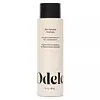What's inside
What's inside
 Key Ingredients
Key Ingredients

 Benefits
Benefits

 Concerns
Concerns

 Ingredients Side-by-side
Ingredients Side-by-side

Water
Skin ConditioningSodium Lauroyl Methyl Isethionate
CleansingCocamidopropyl Betaine
CleansingPropanediol
SolventAcrylates Crosspolymer-4
Emulsion StabilisingCocamidopropyl Hydroxysultaine
CleansingGlycerin
HumectantAminomethyl Propanol
BufferingGlycol Distearate
EmollientAloe Barbadensis Leaf Juice
Skin ConditioningAvena Sativa Kernel Extract
AbrasiveAmaranthus Caudatus Seed Extract
Skin ConditioningHydrolyzed Rice Protein
Skin ConditioningHydrolyzed Quinoa
Skin ConditioningCetrimonium Chloride
AntimicrobialPolyquaternium-10
Ethylhexylglycerin
Skin ConditioningPhenoxyethanol
PreservativeSodium Hydroxide
BufferingCitric Acid
BufferingWater, Sodium Lauroyl Methyl Isethionate, Cocamidopropyl Betaine, Propanediol, Acrylates Crosspolymer-4, Cocamidopropyl Hydroxysultaine, Glycerin, Aminomethyl Propanol, Glycol Distearate, Aloe Barbadensis Leaf Juice, Avena Sativa Kernel Extract, Amaranthus Caudatus Seed Extract, Hydrolyzed Rice Protein, Hydrolyzed Quinoa, Cetrimonium Chloride, Polyquaternium-10, Ethylhexylglycerin, Phenoxyethanol, Sodium Hydroxide, Citric Acid
Water
Skin ConditioningSodium C14-16 Olefin Sulfonate
CleansingDisodium Laureth Sulfosuccinate
CleansingDisodium Cocoamphodiacetate
CleansingSodium Chloride
MaskingGlycol Distearate
EmollientAmodimethicone
Sodium Lauryl Sulfoacetate
CleansingPPG-5-Ceteth-20
EmulsifyingPotato Starch Modified
Cocamide Mipa
EmulsifyingCeramide NP
Skin ConditioningCeramide AP
Skin ConditioningCeramide EOP
Skin ConditioningCarbomer
Emulsion StabilisingNiacinamide
SmoothingTrideceth-6
EmulsifyingTriethyl Citrate
MaskingSodium Hydroxide
BufferingSodium Benzoate
MaskingSodium Lauroyl Lactylate
EmulsifyingSalicylic Acid
MaskingSodium Hyaluronate
HumectantCholesterol
EmollientCoco-Betaine
CleansingCitric Acid
BufferingCetrimonium Chloride
AntimicrobialCaprylyl Glycol
EmollientPhytosphingosine
Skin ConditioningXanthan Gum
EmulsifyingPolyquaternium-10
Acrylates Copolymer
Benzoic Acid
MaskingWater, Sodium C14-16 Olefin Sulfonate, Disodium Laureth Sulfosuccinate, Disodium Cocoamphodiacetate, Sodium Chloride, Glycol Distearate, Amodimethicone, Sodium Lauryl Sulfoacetate, PPG-5-Ceteth-20, Potato Starch Modified, Cocamide Mipa, Ceramide NP, Ceramide AP, Ceramide EOP, Carbomer, Niacinamide, Trideceth-6, Triethyl Citrate, Sodium Hydroxide, Sodium Benzoate, Sodium Lauroyl Lactylate, Salicylic Acid, Sodium Hyaluronate, Cholesterol, Coco-Betaine, Citric Acid, Cetrimonium Chloride, Caprylyl Glycol, Phytosphingosine, Xanthan Gum, Polyquaternium-10, Acrylates Copolymer, Benzoic Acid
 Reviews
Reviews

Ingredients Explained
These ingredients are found in both products.
Ingredients higher up in an ingredient list are typically present in a larger amount.
This ingredient is a preservative, antimicrobial, and emulsifier. It is often used in cosmetics for its ability to cleanse, condition, and reduce static.
Cetrimonium chloride is a quaternary ammonium salt, meaning it has a water-soluble structure.
Citric Acid is an alpha hydroxy acid (AHA) naturally found in citrus fruits like oranges, lemons, and limes.
Like other AHAs, citric acid can exfoliate skin by breaking down the bonds that hold dead skin cells together. This helps reveal smoother and brighter skin underneath.
However, this exfoliating effect only happens at high concentrations (20%) which can be hard to find in cosmetic products.
Due to this, citric acid is usually included in small amounts as a pH adjuster. This helps keep products slightly more acidic and compatible with skin's natural pH.
In skincare formulas, citric acid can:
While it can provide some skin benefits, research shows lactic acid and glycolic acid are generally more effective and less irritating exfoliants.
Most citric acid used in skincare today is made by fermenting sugars (usually from molasses). This synthetic version is identical to the natural citrus form but easier to stabilize and use in formulations.
Read more about some other popular AHA's here:
Learn more about Citric AcidGlycol Distearate serves as a pearlizing or opacifying agent in cosmetic products.
It's often included in cleansers and haircare products to give them a lustrous or shimmering appearance.
It is derived from stearic acid, a natural fatty acid commonly found in vegetable oils and animal fats.
Glycol Distearate isn't fungal acne safe.
Learn more about Glycol DistearatePolyquaternium-10 is an ammonium salt of hydroxyethylcellulose. It is a white and granular powder used as a film-former and anti-static agent.
This ingredient is commonly found in hair conditioning products. According to a manufacturer, its positive charge makes it great for absorbing hair proteins. The manufacturer also states this ingredient helps with curl retention.
For haircare friends: this ingredient is not a silicone.
Learn more about Polyquaternium-10Sodium Hydroxide is also known as lye or caustic soda. It is used to adjust the pH of products; many ingredients require a specific pH to be effective.
In small amounts, sodium hydroxide is considered safe to use. However, large amounts may cause chemical burns due to its high alkaline.
Your skin has a natural pH and acid mantle. This acid mantle helps prevent harmful bacteria from breaking through. The acid mantle also helps keep your skin hydrated.
"Alkaline" refers to a high pH level. A low pH level would be considered acidic.
Learn more about Sodium HydroxideWater. It's the most common cosmetic ingredient of all. You'll usually see it at the top of ingredient lists, meaning that it makes up the largest part of the product.
So why is it so popular? Water most often acts as a solvent - this means that it helps dissolve other ingredients into the formulation.
You'll also recognize water as that liquid we all need to stay alive. If you see this, drink a glass of water. Stay hydrated!
Learn more about Water